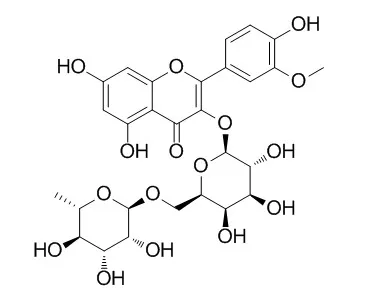As a part of our ongoing effort to identify anti-diabetic constituents from natural sources, we examined the inhibitory activity of the methanol extracts of 12 species of the genus Artemisia, against α-glucosidase and protein tyrosine phosphatase 1B (PTP1B).
The methanol extracts of different species exhibited promising α-glucosidase and PTP1B inhibitory activities. Since the methanol extract of Artemisia capillaris exhibited the highest α-glucosidase inhibitory activity together with significant PTP1B inhibitory activity, it was selected for further investigation.
METHODS AND RESULTS:
Repeated column chromatography based on bioactivity guided fractionation yielded 10 coumarins (esculetin, esculin, scopolin, isoscopolin, daphnetin, umbelliferone, 7-methoxy coumarin, scoparone, scopoletin, 6-methoxy artemicapin C), 8 flavonoids (hyperoside, quercetin, isorhamnetin, cirsilineol, arcapillin, Isorhamnetin 3-robinobioside, linarin, isorhamnetin 3-glucoiside), 6 phenolic compounds (1,5-dicaffeoylquinic acid, 3,4-dicaffeoylquinic acid, 3,5-dicaffeoylquinic acid, 3,5-dicaffeoylquinic acid methyl ester, 4,5-dicaffeoylquinic acid, 3-caffeoylquinic acid), and one chromone (capillarisin). Among these compounds, esculetin, scopoletin, quercetin, hyperoside, isorhamnetin, 3,5-dicaffeoylquinic acid methyl ester, 3,4-dicaffeoylquinic acid, and 1,5-dicaffeoylquinic acid exhibited potent α-glucosidase inhibitory activity when compared to the positive control acarbose. In addition, esculetin and 6-methoxy artemicapin C displayed PTP1B inhibitory activity. Interestingly, all isolated dicaffeoylquinic acids showed significant PTP1B inhibitory activity.
CONCLUSIONS:
Therefore, the results of the present study clearly demonstrate the potential of the A. capillaris extract to inhibit α-glucosidase and PTP1B.
These inhibitory properties can be largely attributed to a combination of different chemical structures, including coumarins, flavonoids, and dicaffeoylquinic acids, which could be further explored to develop therapeutic or preventive agents for the treatment of diabetes. |






 Cell. 2018 Jan 11;172(1-2):249-261.e12. doi: 10.1016/j.cell.2017.12.019.IF=36.216(2019)
Cell. 2018 Jan 11;172(1-2):249-261.e12. doi: 10.1016/j.cell.2017.12.019.IF=36.216(2019) Cell Metab. 2020 Mar 3;31(3):534-548.e5. doi: 10.1016/j.cmet.2020.01.002.IF=22.415(2019)
Cell Metab. 2020 Mar 3;31(3):534-548.e5. doi: 10.1016/j.cmet.2020.01.002.IF=22.415(2019) Mol Cell. 2017 Nov 16;68(4):673-685.e6. doi: 10.1016/j.molcel.2017.10.022.IF=14.548(2019)
Mol Cell. 2017 Nov 16;68(4):673-685.e6. doi: 10.1016/j.molcel.2017.10.022.IF=14.548(2019)